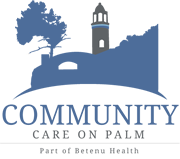
A Guide To Choosing The Right Convalescent Home For Your Loved One
24 Oct, 2024
Independent Senior Living
Selecting the right convalescent home for a loved one is a decision that requires careful thought and consideration. A convalescent home provides specialized care for individuals recovering from illness, injury, or surgery, and it plays a crucial role in their rehabilitation and long-term well-being. The right facility can significantly improve the quality of life for your loved one, but the process of finding the perfect fit can be overwhelming. This guide will walk you through the key factors to consider when choosing the right convalescent home for your loved one.
1. Assessing Your Loved One’s Needs
Before you begin your search, it’s important to have a clear understanding of your loved one’s health and care requirements. Some considerations include:
- Medical Needs: Does your loved one require physical therapy, post-surgery care, or specialized treatments like respiratory therapy or wound care?
- Cognitive Condition: If your loved one has Alzheimer’s disease, dementia, or other cognitive impairments, they may require specialized memory care services.
- Mobility and Daily Living Assistance: How much help do they need with daily activities like eating, bathing, and dressing? Do they need assistance with mobility, such as using a wheelchair or walker?
Understanding these needs will help you find a facility that can provide the necessary level of care and support.
2. Location and Accessibility
When choosing a convalescent home, the location is an important factor for both practical and emotional reasons. Consider the following:
- Proximity to Family: It’s important to select a facility that is close enough for family and friends to visit regularly. Regular visits not only provide emotional support but also allow family members to monitor the quality of care.
- Access to Medical Services: Ensure the facility is close to hospitals or specialists that may be necessary for your loved one’s ongoing medical care. Easy access to emergency services is also essential.
Choosing a location that is both convenient and offers access to the necessary resources will ensure a smoother and more supportive experience.
3. Quality of Care and Staff Expertise
The quality of care provided at a convalescent home is paramount. When touring facilities, pay attention to the following:
- Staff Qualifications: Are the nurses, caregivers, and therapists certified and experienced in providing convalescent care? Specialized medical training in areas like post-acute care, physical therapy, and wound care is critical for recovery.
- Staff-to-Resident Ratio: A lower staff-to-resident ratio generally means that your loved one will receive more personalized attention. Be sure to ask how many staff members are available during different shifts, especially at night.
- Care Plans: Does the facility offer personalized care plans tailored to each resident’s specific needs? It’s important that your loved one’s care plan evolves as their health condition changes.
You should also ask about staff turnover rates, as high turnover can indicate problems with management or care quality.
4. Tour the Facility and Assess Cleanliness and Safety
A clean and well-maintained facility is essential for the health and well-being of its residents. During your tour, observe the following:
- Cleanliness: Are the common areas, bathrooms, and patient rooms clean and odor-free? A facility that is well-maintained is more likely to prioritize infection control and hygiene.
- Safety Features: Does the facility have adequate safety measures, such as handrails, non-slip flooring, and emergency call systems? Ask about fire safety protocols, evacuation plans, and emergency response procedures.
- Room Accommodations: Are the rooms spacious and comfortable? Do they offer private or semi-private rooms, and are residents allowed to personalize their living space?
Evaluating the physical environment will help you determine whether the facility is safe, comfortable, and conducive to recovery.
5. Meals and Nutrition
Proper nutrition is essential for recovery and overall well-being. Ask about the facility’s meal planning and dietary services:
- Meal Options: Are meals prepared on-site, and do they accommodate special diets, such as low-sodium, diabetic, or gluten-free options?
- Meal Schedules: How many meals are served each day, and are snacks available between meals? Are residents encouraged to dine together in a communal setting to promote social interaction?
- Nutritional Monitoring: Does the facility have a dietitian or nutritionist on staff to monitor residents’ dietary needs and ensure they are receiving proper nutrition?
Good nutrition is vital for the healing process, so it’s important that the facility offers healthy, well-balanced meals.
6. Social Activities and Rehabilitation Programs
Convalescent homes are not only about medical care—they should also promote social interaction and mental stimulation to improve the residents’ quality of life. Ask about:
- Social and Recreational Activities: What types of activities are offered to residents? Are there exercise classes, arts and crafts, music therapy, or other forms of entertainment?
- Therapy Services: Does the facility offer physical therapy, occupational therapy, and speech therapy? Rehabilitation is a crucial aspect of recovery, so make sure that the home has a strong therapy program.
- Personal Interests: Are there opportunities for residents to continue hobbies or interests they enjoyed before moving to the facility?
These programs help residents maintain a sense of independence and well-being while encouraging social connections.
7. Financial Considerations
Convalescent care can be expensive, so it’s important to understand the costs upfront and explore available payment options. Ask about:
- Cost Structure: What are the costs associated with care, and what services are included in the base fee? Are there additional fees for specialized services or higher levels of care?
- Insurance and Payment Plans: Does the facility accept Medicare, Medicaid, or private insurance? Are there long-term care insurance plans or financial assistance programs available?
- Payment Flexibility: Are payment plans available for families, and are there flexible options to accommodate changes in care needs?
Having a clear understanding of the financial aspect will help you avoid surprises down the road.
8. Read Reviews and Get Recommendations
Finally, it’s always a good idea to read reviews from current or former residents and their families. You can learn about:
- Resident Satisfaction: Are current residents and their families satisfied with the level of care provided? Have any recurring complaints or issues been raised in reviews?
- Recommendations: Ask for recommendations from healthcare providers, friends, or family members who may have experience with convalescent homes in your area.
Taking the time to gather feedback from others can provide valuable insights into the facility’s reputation and quality of care.
Conclusion
Choosing the right convalescent home for your loved one is a decision that requires careful thought and research. By assessing your loved one’s needs, touring facilities, and asking the right questions, you can find a place that offers high-quality care, comfort, and peace of mind. From location and safety to personalized care plans and social activities, every aspect plays a role in ensuring your loved one’s recovery and long-term well-being.

Leave a Comment